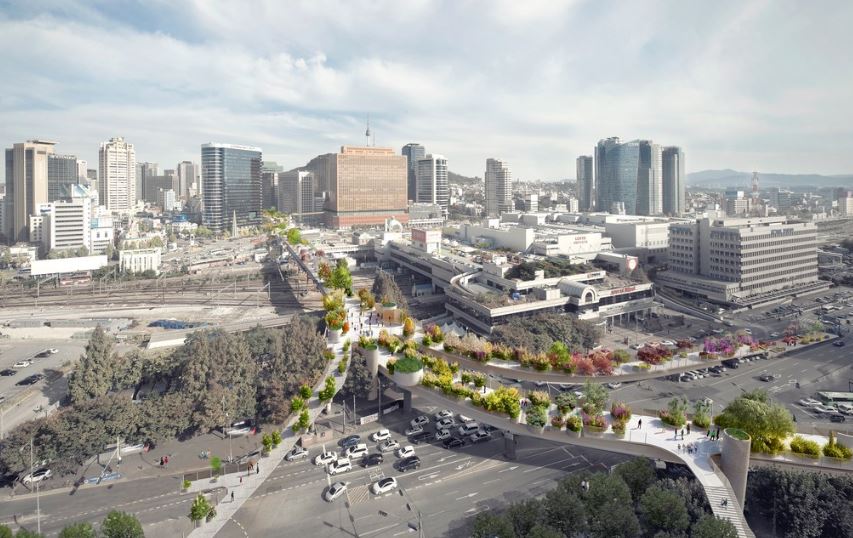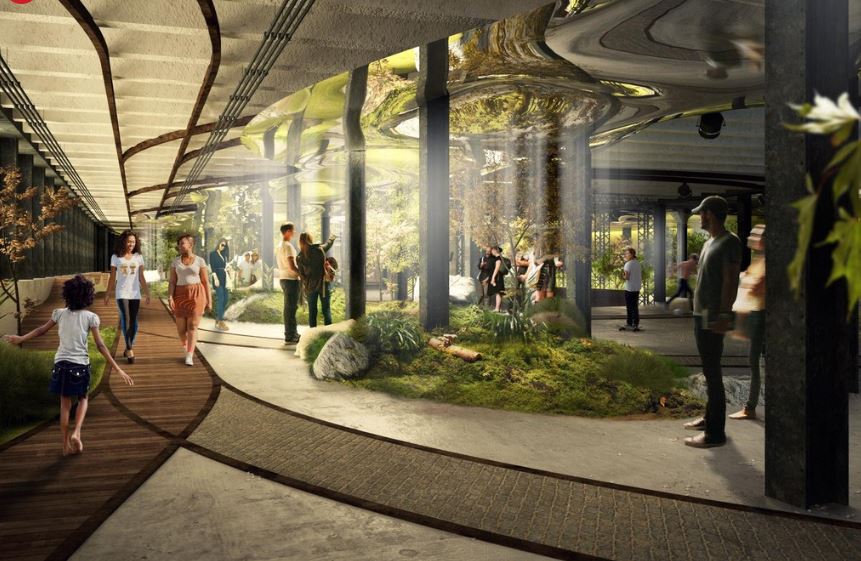[US_Conde Nast Traveler] From NYC's High Line to Miami's Underline: How Linear Parks Are Changing Cities
From NYC's High Line to Miami's Underline: How Linear Parks Are Changing Cities
by Molly Elizalde January 26, 2017
See the Original Article (Click Here)

New York's High Line is world-famous, but it's not the only project seeking to transform abandoned locales into beautiful green spaces.
In 1981, what is now New York’s High Line—the railway-turned-linear park that runs down the west side of downtown Manhattan—almost became an inventive residential complex called the Bridge of Houses. The project, which was proposed by architect Steven Holl to transform the elevated tracks into a series of “villas” and courtyards, never came to light and the eyesore sat unused for almost three decades.
Ahead of his time, Holl foresaw how our cities would constantly reinvent themselves: When the High Line opened its first phase in 2009, it arguably became one of the most influential examples of how an increasingly dense area can become more livable by reclaiming abandoned infrastructure and adapting it into much-needed park space for city dwellers. This concept, known as adaptive reuse, is now one of the most popular methods for transforming urban landscapes.
These greenways, popular among locals and tourists alike, are attractions that are becoming as ubiquitous as traditional parks like Paris’s Jardin des Tuileries or New York’s Central Park. Seamlessly transporting visitors from one neighborhood to the next, landscaped promenades make for well-rounded excursions suited to wayfarers, design aficionados, aspiring horticulturists, and those just in need of a break from the surrounding city.
From Miami to New York to Seoul, the latest iterations of the adaptive reuse phenomenon present creative ways to transform existing infrastructure with new technology, art initiatives, and green spaces. Here, we detail the three projects to watch.
<The Underline is being built on the unused land under Miami's Metrorail.>
The Underline, Miami
Today, the area underneath Miami’s Metrorail is winding, barren, and irregularly paved. But the city has plans for a dramatic transformation. The Underline is a project set to reimagine the 10-mile stretch between the Brickell and Dadeland South stations with bike and pedestrian trails, sport courts, and innovative landscaping. Designed by James Corner Field Operations, the same urban planning firm behind the High Line, the first phase is a one-mile area starting at the Miami River. Construction won’t begin until this fall and is slated for completion in 2018 (the entire project will take seven years), but the Underline is already gearing up its programming.
On January 14, the Underline kicked off its arts initiative, drumming up excitement for the park’s forthcoming makeover. Four participatory projects by Miami-based artists Nicolas Lobo, Naomi Fisher, Bhakti Baxter, and Agustina Woodgate set the program’s precedent: “These are artists that are really invested in Miami developing into a more metropolitan city,” says Amanda Sanfilippo, the curator for Art and Public Places, which oversaw the commissions. “They have local knowledge that’s really special in celebrating this transformative moment.”
The works are meant to engage the public through their performative aspects: Expect to see calisthenics experts working out on Lobo’s aestheticized steel gym, "Brutalist Workout," and ballerinas dancing with Fisher’s “#PUZZLED” sculpture and its built-in ballet barre. Or tune into Woodgate’s podcast at radioee.net, which she created while riding a 16-person bike through the park. Conversely, Baxter’s piece is slightly more permanent. Creating floral arrangements and sculptural planters, the artist responds to the Art Deco and industrial Metrorail stations along the Underline; the native tropical plants on display will later be sowed into the park’s landscape.
The works will be up through April 1, but expect more commissions like these in the years to come.
Seoul Skygarden
Inspired by New York’s High Line, Seoul’s own Skygarden takes the idea of urban “greenification” to a new level. Coming off the successful revitalization of the once-polluted Cheonggyecheon Stream, now a popular destination for both tourists and locals, the city decided to transform a 1970s-era overpass that had been deemed unsafe for traffic into park space, a shortfall in the concrete-heavy city.
The new pedestrian walkway has been modeled after an arboretum and serves as a library of Korean plants with 254 species planted in alphabetical order. Architect Winy Maas of MVRDV, the Dutch firm that won the 2015 design competition for the project, describes the Skygarden as a “vegetal village,” likening it to an inhabited bridge such as Florence’s Ponte Vecchio; he notes the cafes, tea houses, and education centers that have been built into the design, each building modeled after the planters on the bridge.
The half-mile long Skygarden, just months from its April opening, also extends into the local community, both structurally and ecologically: It will act as a nursery, rearing trees for the surrounding district, while newly built side bridges connect the project to adjacent department stores and housing complexes.
“We are working to make the whole neighborhood more green,” Maas says. “It’s a starting point for a full discovery of the area’s beauty.”
<The Lowline's biggest challenge? Figuring out how to grow plants underground.>
The Lowline
“No one asked for this,” says James Ramsey when asked how the idea to build a subterranean garden adjacent to the Essex Street JMZ subway station on Manhattan’s Lower East Side first came to him. The former NASA engineer had been tinkering with solar technology when he first learned about the abandoned railroad tracks (they were last used in 1948 as the Williamsburg Bridge Trolley Terminal), and somehow he landed on the idea of the Lowline.
Ramsey, also an architectural designer, then managed to get the city to put out a call for proposals for the site. Luckily, he was the only one to submit a project.
The plan revolves around the idea of a “remote skylight,” which redirects sunlight underground, enabling plants to grow. Ramsey and his team have been testing the technology at a demonstration lab since last year, where they have successfully grown a range of fruits, vegetables, and greenery (his favorite were the “delicious” strawberries).
A few blocks from the proposed site, the lab, open through February 26, has been free to the public and available for private gatherings, including yoga classes, dance performances, and education initiatives. And even though the Lowline won’t be complete until 2021 at the earliest, the lab has served as a study for how to shape the final space. “We want to craft an experience that allows us to appreciate the historical, weird qualities of this forgotten space,” says Ramsey, “but also have this completely new experience of wandering around a subterranean garden.”

